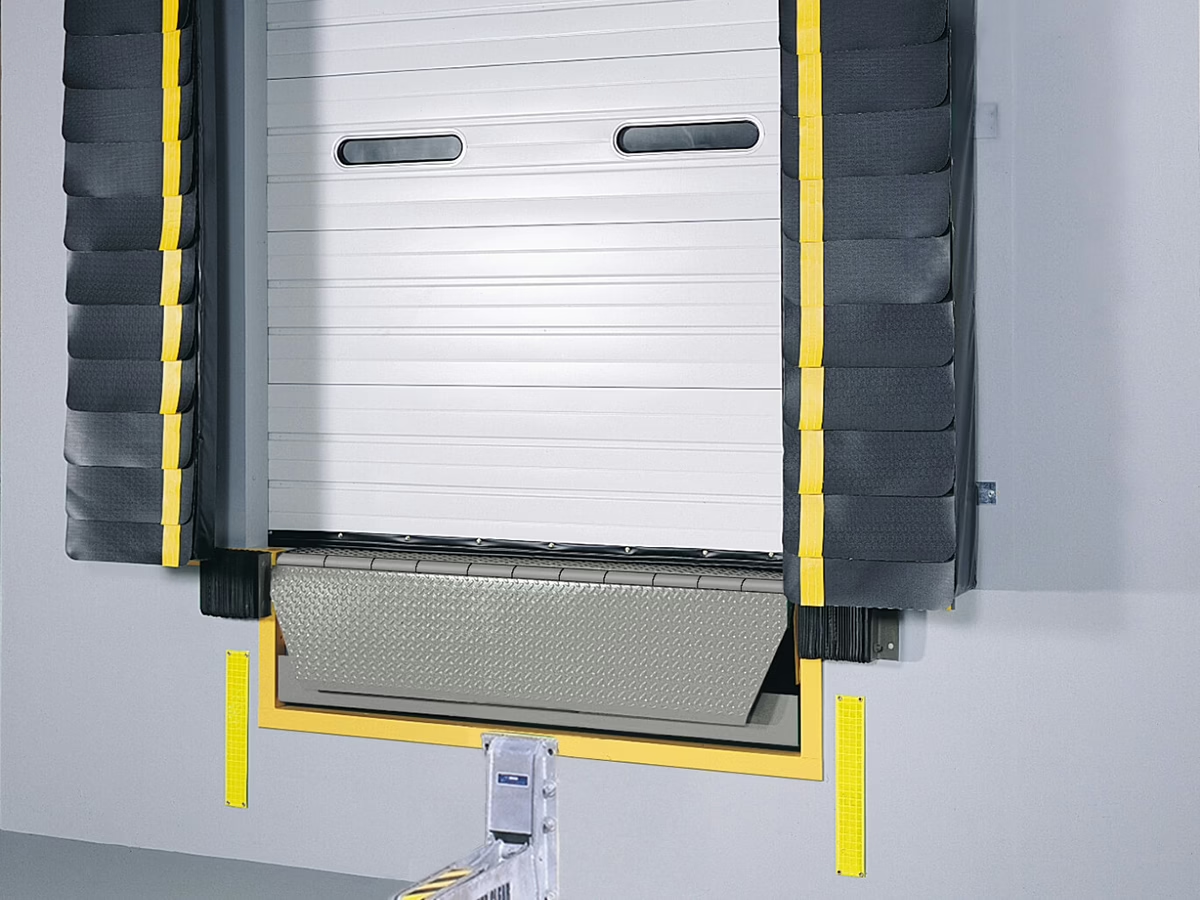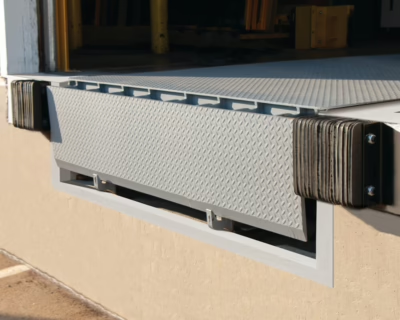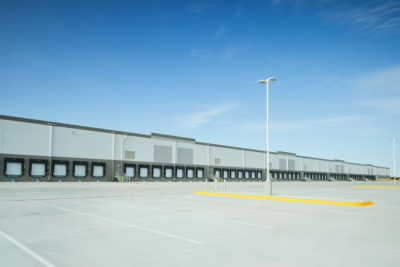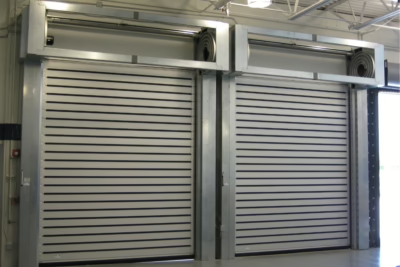Efficient and safe loading dock operations are essential for any commercial or industrial facility. Your dock levelers and restraint systems are critical for ensuring smooth loading and unloading, but like any high-usage equipment, they wear down over time. When these systems become outdated or start underperforming, they can compromise productivity, increase safety risks, and lead to costly repairs.
So how do you know it’s time to upgrade? Below, we break down the top signs that your equipment may need replacing, what to look for in modern solutions, and how to make the most out of your investment.
Equipment That Affects Everything
Before diving into upgrade signs, it’s worth noting why dock levelers and vehicle restraints matter:
- Dock levelers bridge the height and gap between your dock and a trailer, ensuring smooth material handling.
- Vehicle restraint systems keep trailers securely in place during loading and unloading to prevent accidents.
When these systems start to fail, the ripple effect can be major – from worker injury and damaged goods to operational downtime and compliance violations.
1. You’re Dealing with Frequent Breakdowns
If your maintenance team is constantly repairing your dock leveler or restraint system, that’s a clear red flag.
Watch for:
- Hydraulic fluid leaks or loss of pressure
- Malfunctioning restraint mechanisms that don’t consistently engage
- Sagging dock plates, uneven leveling, or delayed activation
- Equipment frequently taken out of service, disrupting operations
When repair costs start approaching 50% of the price of a new unit – or repairs become so frequent that they disrupt uptime – it’s time to consider a full replacement.
2. Safety or Compliance Is a Growing Concern
Regulatory standards evolve. If your equipment no longer meets OSHA or ANSI safety guidelines, you’re risking not only employee well-being but also legal and financial exposure.
Signs your system may be non-compliant:
- Restraints do not securely engage a variety of trailer types
- No visual or audible communication (lights, alarms) for docked trailers
- Worn-out dock bumpers, lip plates, or lack of fall protection
- Manual systems used in high-volume docks without automation support
Pro Tip: Look for upgrades that offer LED communication systems, automatic deployment, and advanced locking mechanisms. These not only enhance safety but speed up the loading process.
3. Your Equipment Is Over 15 Years Old
Most dock levelers and vehicle restraints have a lifespan of 10–20 years depending on usage and maintenance. If yours are approaching – or exceeding – this window, you’re likely missing out on:
- Energy-efficient hydraulic systems
- Smart control panels with diagnostics
- High-speed activation
- Compatibility with new trailer configurations
Parts for older equipment may also be hard to find, and repairs become both slower and more expensive.
4. Your Throughput Has Outgrown the Equipment
As your business grows, your equipment needs to scale with it. High-volume or high-cycle operations quickly expose the limitations of older mechanical or underpowered systems.
Consider upgrading if:
- You’re loading more trucks per day than you were when the dock was installed
- You’re working with a variety of trailer types (reefers, step decks, etc.)
- Downtime between trucks is increasing due to adjustment delays
Modern systems are built for faster cycling, minimal operator input, and broader trailer compatibility – all of which keep your operations moving efficiently.
5. A Dock Collision or Structural Damage Occurred
Even a minor forklift or trailer impact can cause unseen stress fractures or alignment issues that worsen over time.
After any dock incident:
- Inspect welds and mounting hardware for cracks or looseness
- Evaluate whether the leveler lip deploys smoothly and consistently
- Check for any torsion or warping in the plate
If there’s any doubt about safety or structural integrity, an upgrade is your best long-term move.
6. Expansion or Renovation Is Underway
If you’re adding new dock positions, reconfiguring your layout, or renovating part of your warehouse, it’s the ideal time to replace old dock levelers or restraint systems.
Why?
- You’ll avoid retrofitting old systems later
- Newer models are easier to integrate with dock seals, doors, and control panels
- It ensures long-term alignment with future throughput goals
7. Restraint or Leveler No Longer Matches Trailer Styles
Logistics fleets evolve. Today’s trailers come in different sizes and configurations, which means your restraint and leveling systems must be flexible.
Look for upgrade needs when:
- Restraints fail to engage low-profile or lift-gate trailers
- Levelers don’t provide adequate slope or reach
- Manual repositioning is frequently required
Upgrading ensures safe and fast loading regardless of what type of trailer backs in.
8. You’re Paying the Price in Energy Loss
Outdated dock levelers are notorious for energy loss – especially if they lack proper weather seals or insulation. Air leakage around the dock door adds to HVAC costs and can compromise temperature-sensitive inventory.
Upgrade Benefits:
- Improved weather seals and perimeter gasketing
- Foam-insulated deck designs
- Minimized door gap exposure
Real-World Example: Safety and Speed in Action
A regional distributor in Dallas was operating with 20-year-old mechanical dock levelers and outdated manual wheel chocks. Loading crews complained about slow cycles, and a near-miss incident with an unsecured trailer prompted leadership to act.
They upgraded to hydraulic dock levelers with powered restraints, LED dock communication systems, and integrated controls. The result?
- Loading speed increased by 22%
- Near-miss incidents dropped to zero
- Energy bills decreased thanks to upgraded weather-sealed levelers
The ROI was realized in just over 14 months.
Final Thoughts
Your dock equipment is the backbone of safe and efficient shipping and receiving. If you’re seeing signs of wear, struggling with downtime, or operating with outdated systems, now is the time to consider upgrading.
New dock levelers and restraint systems can improve:
- Safety: With better locking and alert systems
- Efficiency: Through faster cycles and less manual input
- Compliance: With modern OSHA and ANSI standards
- Cost savings: Through reduced maintenance and energy efficiency



